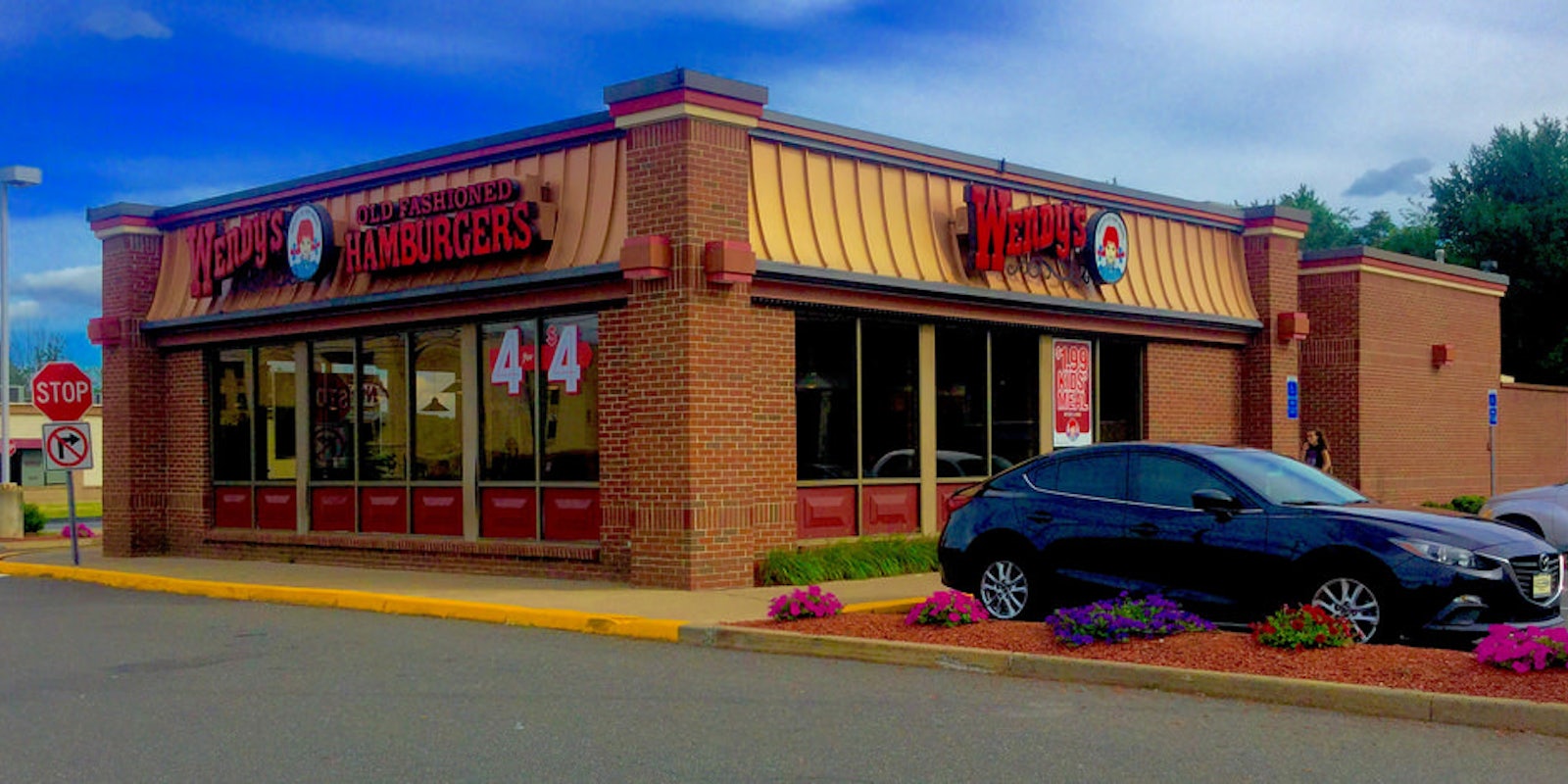At what point do the convenience desires of a younger generation supersede the labor force’s need for minimum-wage jobs? Wendy’s will be the next corporation to experiment with that question as many global industries are asking about the future of an automated workforce.
According to the Columbus Dispatch, the fast food giant plans to install an average of three self-service kiosks in 1,000 of its stores by the end of the year.
“There is a huge amount of pull from (franchisees) in order to get them,” said David Trimm, Wendy’s chief information officer, via the Dispatch. “With the demand we are seeing … we can absolutely see our way to having 1,000 or more restaurants live with kiosks by the end of the year.”
Wendy’s already has begun using kiosks in select locations, and Trimm said they were a hit with younger customers (who apparently prefer to use the technology to order their food) and management (because, ultimately, the kiosks will be cheaper than having to pay employees).
Trimm said the three kiosks would cost about $15,000, but it would take less than two years to pay it back because of the lower labor costs and higher sales volume.
But while this self-service trend might help corporate America, it probably will hurt low-wage workers who will be replaced by the machines. Amazon Go recently announced its version of the future of grocery shopping—a future that doesn’t include checkout clerks or baggers—and Uber will be utilizing self-driving cars in the next few years.
While Wendy’s customers still will have the opportunity to order food from a human worker behind the counter—and the 1,000 Wendy’s stores that will receive the kiosks only make up 16 percent of the total number of Wendy’s restaurants—it’s not difficult to envision a future where all ordering is done via machines or by smartphones. Meanwhile, robots, which never demand smoke breaks or post-shift free food, cook the orders and ready them mistake-free for the customers.
“They are looking to improve their automation and their labor costs, and this is a good way to do it,” said Darren Tristano, a food-service research and consultant, told the AP. “They are also trying to enhance the customer experience. Younger customers prefer to use a kiosk. … This move puts them at the forefront of the kiosk and tech movement.”
What, then, becomes of the teenage or low-income workers who need that $10-per-hour paycheck in order to survive?
As the Motley Fool wrote:
Automation is going to cost jobs, but it’s not going to happen quickly. Some chains may make a strategic business decision that having employees perform work that could be automated benefits their business. In the case of fast food, however, automated order-taking will eventually mean fewer human order takers. Some of those jobs may shift to customer service, production or order delivery, but many will simply go away.
Eventually, automation will spread to production, but that’s a more expensive problem to solve and chains will be slow to make that investment.
In the short term, adding order-taking technology will likely save most of these companies some money, but it will take time to pay off that investment. Automation is fast food’s future, but that future is only partially here.
It’s not just Wendy’s, though. McDonald’s and Panera also have been experimenting with kiosks. And at least one fast food CEO salivates at the idea of a fully-automated restaurant.
“I want to try it,” Carl’s Jr. and Hardee’s CEO Andy Puzder—who was Donald Trump’s pick to be the U.S. labor secretary but who had to withdraw when it was clear he wouldn’t get confirmed by the Senate—told Business Insider last March. “We could have a restaurant that’s focused on all-natural products … where you order on a kiosk, you pay with a credit or debit card, your order pops up, and you never see a person.”
A person that won’t get sick or no-show a shift or mess up an order. Also, of course, a person the CEO doesn’t have to pay.


